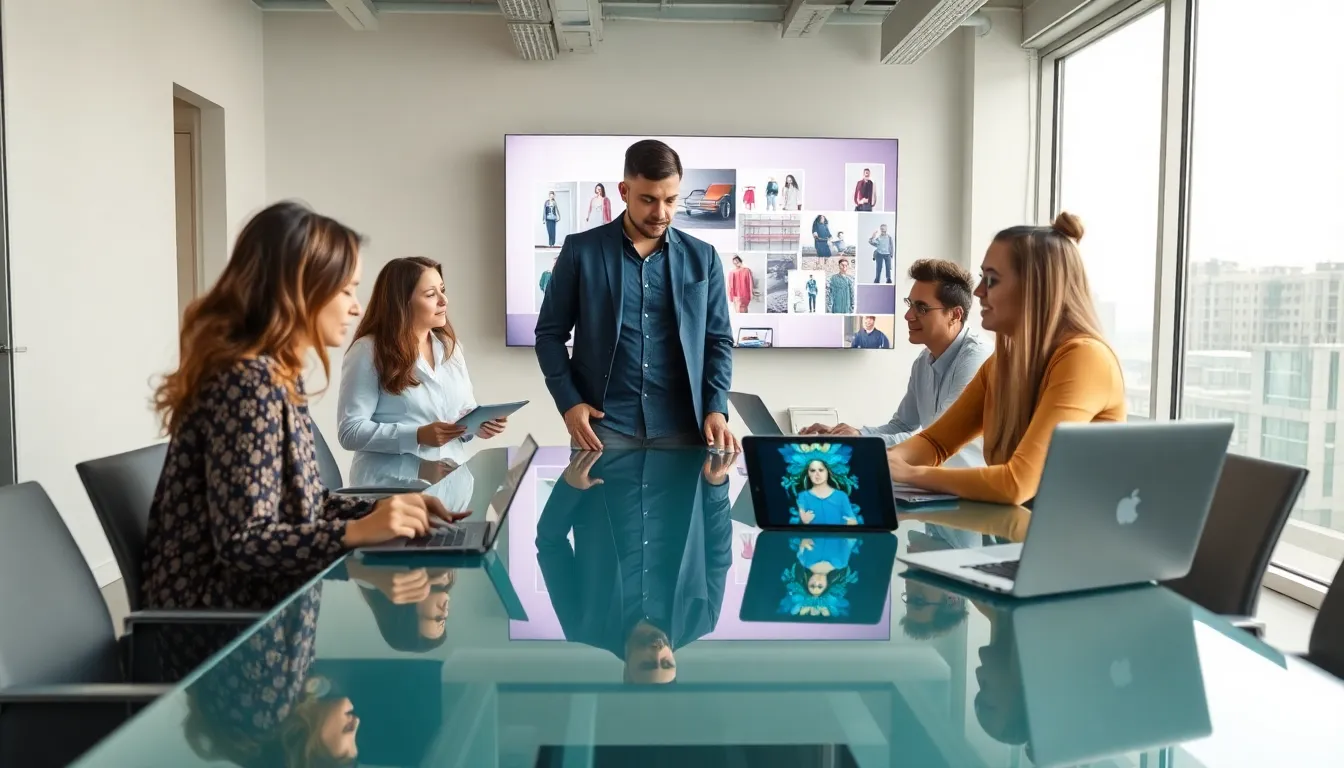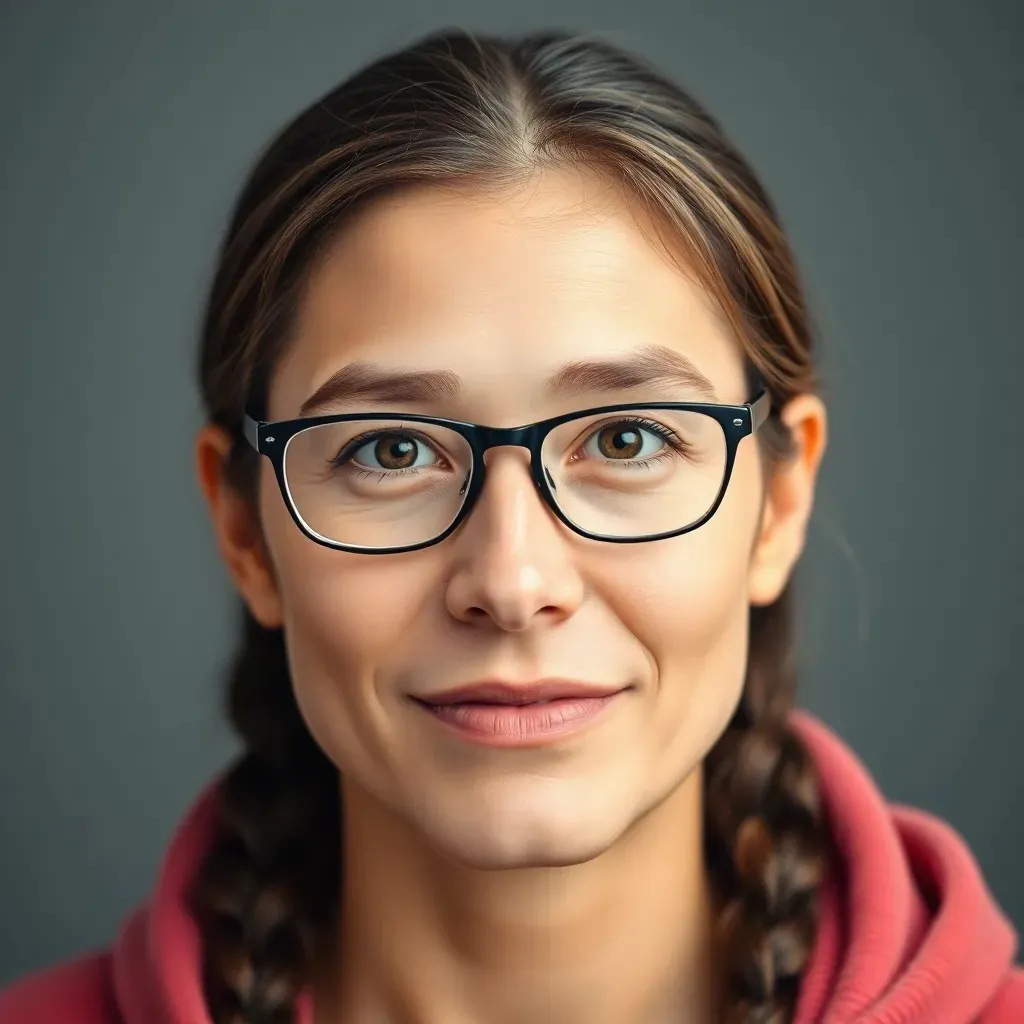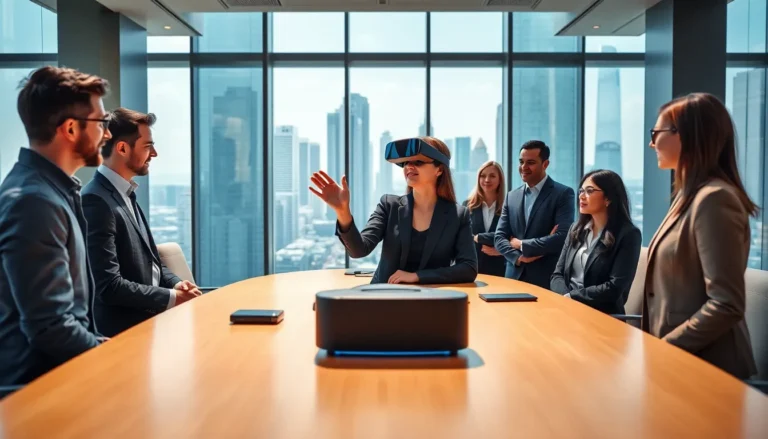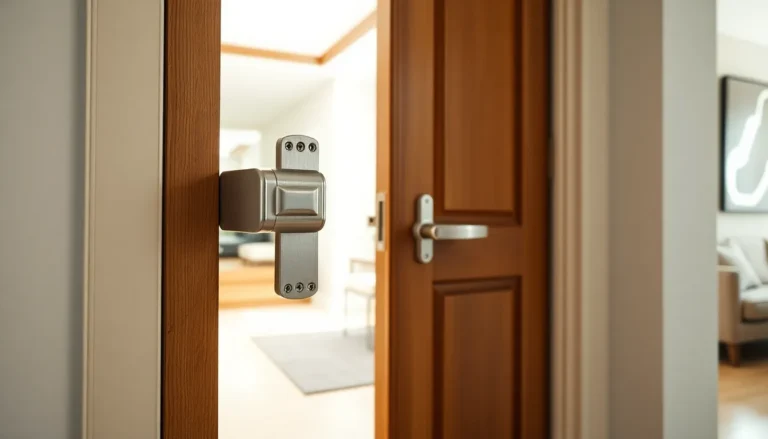Ever wished you could bring your imagination to life without picking up a paintbrush? Enter augmented reality (AR) designers, the wizards of the digital realm who transform our wildest ideas into mind-bending experiences. As we plunge deeper into a tech-savvy future, these creatives are not just riding the wave of innovation: they’re shaping its very core. If you think designing for a screen is challenging, imagine layering digital elements over the physical world, now that’s a serious juggling act. In this text, we’ll explore the intriguing realm of augmented reality design, unpacking its key skills, tools, and the myriad ways these designers are redefining our interactions with technology. So, buckle up, because the future is looking quite augmented.
Table of Contents
ToggleUnderstanding Augmented Reality Design

To truly appreciate the role of augmented reality designers, one must first understand what they do. Augmented reality, at its core, overlays digital information onto the real world. Unlike virtual reality, which creates an entirely immersive digital environment, AR enhances our existing surroundings. Think of it as digital graffiti, creative, interactive, and, when done well, utterly captivating.
An AR designer isn’t just an artist. They are a combination of a storyteller, an engineer, and a psychotherapist (because, let’s face it, they have to manage lots of user expectations.). They jump into user experience (UX) principles, ensuring that every digital interaction is intuitive and engaging. Whether designing an AR app for retail to visualize how furniture fits in a living room or crafting educational tools that make science come alive, the goal remains the same: create an immersive experience that seamlessly integrates into the user’s reality.
Key Skills for Augmented Reality Designers
The toolbox of an augmented reality designer is quite diverse. Key skills encompass both artistic flair and technical prowess.
- 3D Modeling: Proficiency in 3D modeling software such as Blender or Maya is crucial. Designers must create lifelike digital objects that viewers can interact with.
- User Interface (UI) Design: Understanding how users interact with digital elements is fundamental. This includes knowing how to design interfaces that are accessible and visually appealing.
- Programming Knowledge: Familiarity with programming languages such as C#, C++, or Swift is often necessary. This allows designers to manipulate AR frameworks and integrate interactive features seamlessly.
- Spatial Awareness: A keen sense of the physical and spatial relationship between the digital and real world significantly enhances user experience.
- Problem-Solving: AR designers often face unique challenges. Thinking outside the box to create innovative solutions is essential.
Tools and Technologies Used in Augmented Reality Design
When it comes to tools for augmented reality design, the options are vast and varied. Some of the industry standards that aspiring AR designers should explore include:
- Unity 3D: This powerful game engine is a go-to for AR development. It allows designers to create interactive experiences and comes with extensive documentation and community resources.
- ARKit and ARCore: Apple and Google’s AR frameworks enable designers to build AR experiences directly on iOS and Android platforms respectively. They provide essential tools to work with spatial awareness and interaction capabilities.
- Vuforia: This platform specializes in image recognition and tracking, making it easier to integrate AR into existing applications.
- Blender & Maya: These 3D modeling tools help artists create stunning assets for AR applications, allowing for high levels of customization and creativity.
Leveraging these tools effectively will help AR designers bring their visions to life.
The Role of Augmented Reality Designers in Various Industries
The expertise of augmented reality designers extends beyond gaming and entertainment, reaching multiple sectors:
- Healthcare: AR helps doctors visualize complex anatomical structures, enhancing training for medical students and improving patient communication.
- Retail: Brands use AR to let customers visualize products in their own space before purchasing, minimizing returns and increasing customer satisfaction.
- Education: Schools are incorporating AR into their curricula, making learning interactive and engaging. Imagine studying ancient civilizations while standing in a digitally reconstructed Roman forum.
- Real Estate: Virtual house tours powered by AR allow potential buyers to explore properties from the comfort of their home.
These examples illustrate just how transferable AR design skills are, opening endless doors across various fields.
Challenges Faced by Augmented Reality Designers
Even though the exciting prospects, augmented reality designers face several challenges. One major hurdle is keeping up with rapidly evolving technology. Each year brings new devices, software updates, and changing user expectations. Designers need to be proactive learners, constantly updating their skills.
Another significant challenge lies in achieving the perfect balance between functionality and creativity. What might look stunning abstractly may confuse or frustrate users in practice. Here, user testing becomes crucial, designers must iterate their work based on feedback from real users, which can be time-consuming yet essential.
Finally, accessibility is vital. Not all users have the same level of familiarity with AR technologies, which can lead to exclusion. A designer’s responsibility includes creating experiences that are inclusive and easy for everyone to engage with.
Future Trends in Augmented Reality Design
Looking ahead, the future of augmented reality design holds exciting potential.
- Integration with Artificial Intelligence: As AI continues to advance, AR designers are likely to incorporate intelligent features that learn user preferences, offering personalized experiences.
- Widespread Adoption in Remote Work: With the rise of remote work, AR can help collaboration by allowing team members to visualize and share ideas in real-time, regardless of location.
- Enhanced AR Glasses: The development of more sophisticated AR glasses will change how users experience augmented information, making it more wearable and integrated into daily life.
- Focus on Sustainability: Expect AR solutions that help promote sustainable practices, like virtual visualization of eco-friendly changes to one’s home or community.
These trends point towards a vibrant future, where augmented reality becomes an integral part of our daily interactions.






